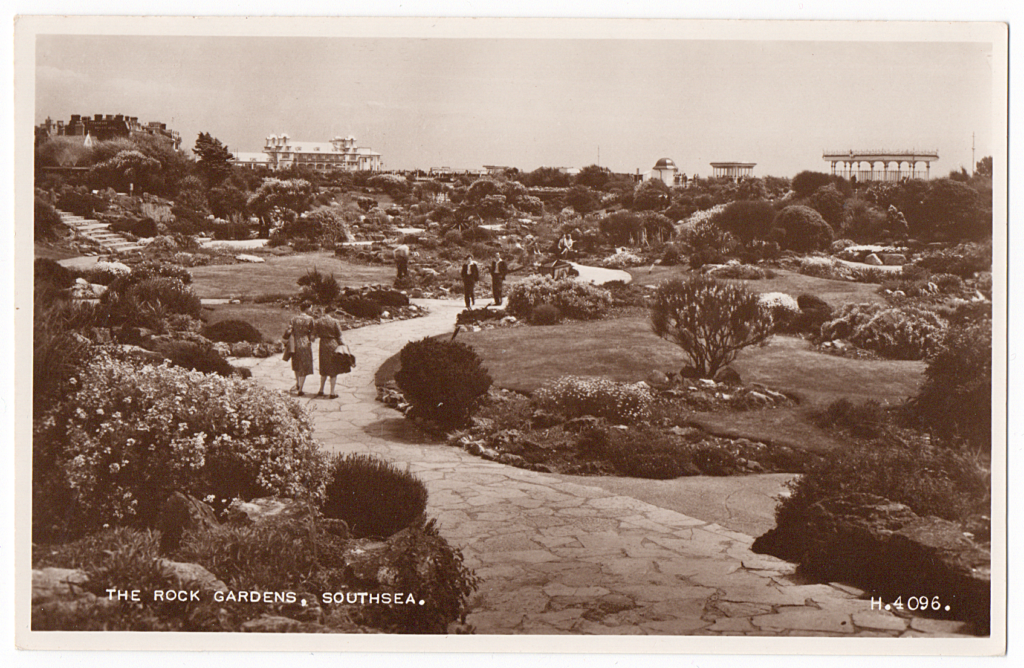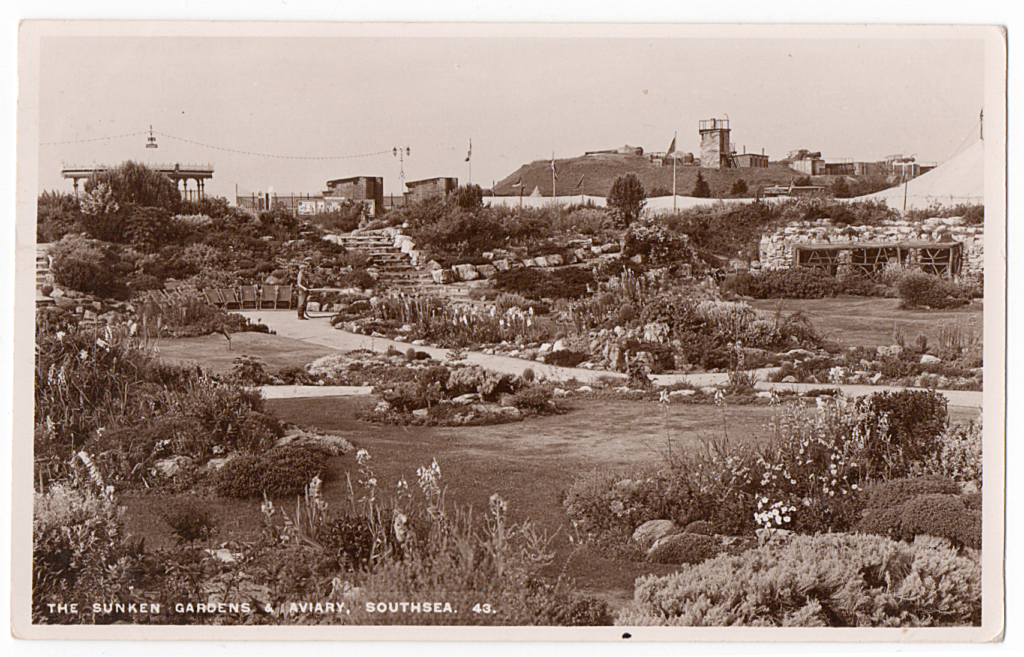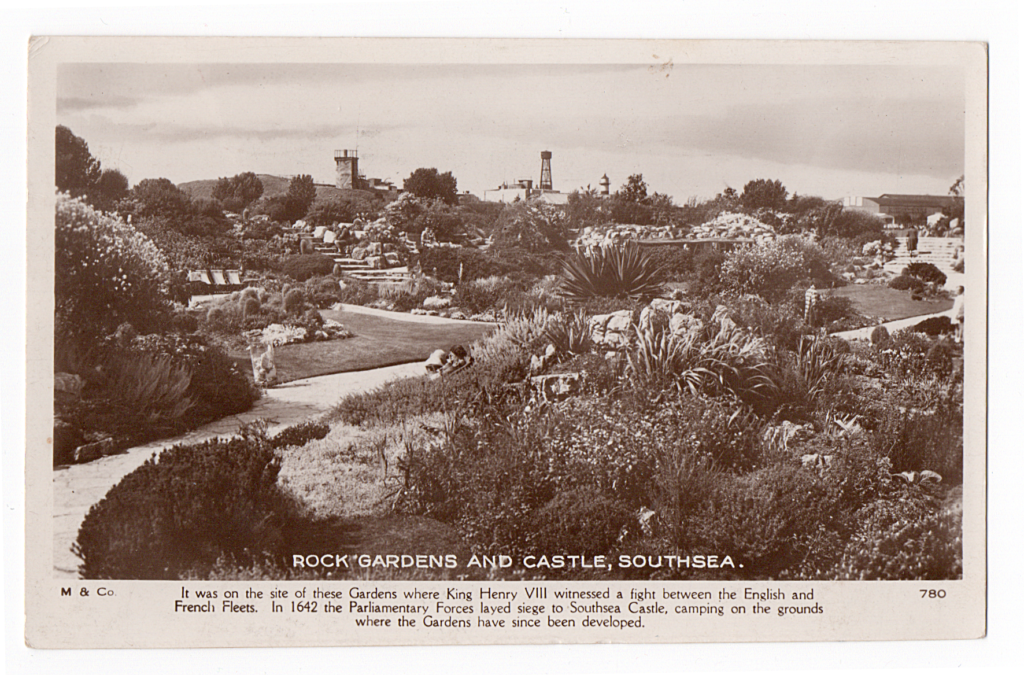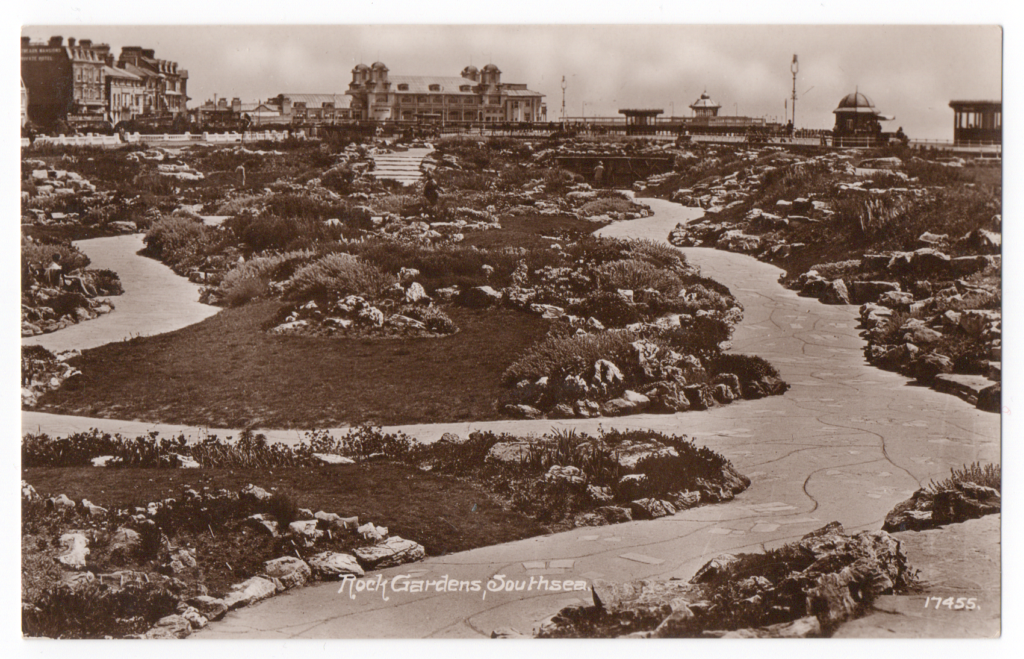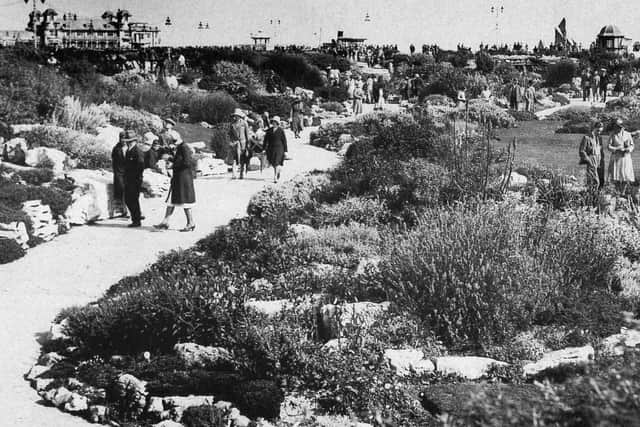
Construction of the rock garden began in 1928 using unskilled labour from the government’s ‘back to work’ scheme following World War I depression. Large Westmorland water-worn limestone from Cumbria was used and laid out in an interlocking pattern of beds and paths. In 1932, the Southsea Official Guide claimed that the rock garden was the largest artificially constructed one anywhere in Great Britain. By this time aviaries had been added to the rock banks, and a couple of years later an illuminated fountain and cascade were constructed. The gardens were closed to the public in World War 2. After the war, the gardens were restored, stones repositioned and replanted with more tolerant plants to suit the maritime conditions. In 1948, lighting was installed following the opening of the adjacent Rock Garden Pavilion. In 1986 the Pavilion was closed and the Pyramids opened a couple of years later on the same site after the devastating hurricane that hit the south coast, which caused extensive damage in the Rock Garden. To coincide with the opening of the Pyramids, the Rock Garden was renovated with fresh planting, resurfacing of the footpaths, ramps, railings for disabled access, and floodlighting. The aviaries had been removed a couple of years prior.
Since 2000, the Rock Gardens management has been contracted out to Portsmouth City Council Landscape Group with volunteers from the Friends of Southsea Rock Garden assisting to maintain and develop it. (see note below)
Note: The Rock Garden is maintained by Portsmouth City Council, with volunteers from the Friends Of Southsea Rock Garden assisting to maintain and develop it,
(reproduced from Hampshire Gardens Trust)
